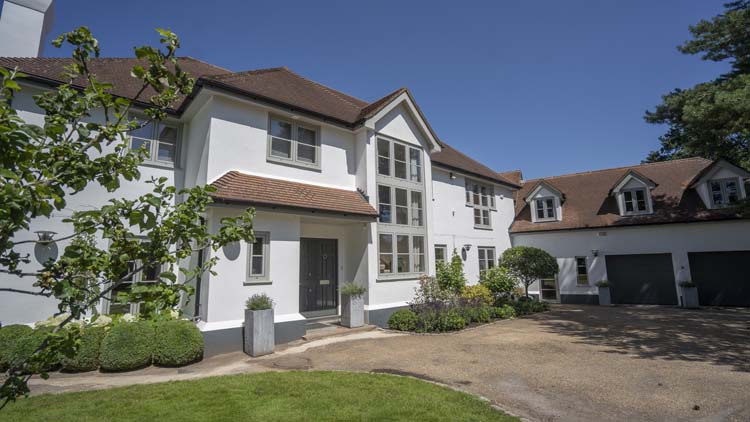
There have been some new updates to the regulations of glazing thermal performance. The updates form part of a more significant number of building regulations throughout England, costing upwards of £6.6 billion. These new regulations aim to vastly improve the energy efficiency of both new and old buildings. The latest version of the updated approved L document will be effective as of 15th June 2022.
There are several ways you can enhance the thermal performance of glazing for your new build or home renovation.
Unlike single glazed windows which do very little to reduce heat loss. Double glazed units and window frames (timber, aluminium, PVC-U or composite) provide more space for insulation, air tight seals with air chambers through.
The layer of air between the two panes of glass creates a seal from the outdoors and limits the amount of cold air entering your home
Some double-glazed windows can be filled with Argon or Krypton gas for improved energy ratings.
Secondary glazing can also effectively contribute to the thermal performance of a building.
The updates will see changes to the minimum thermal performance of glazing installed in new homes and extensions. This aims to bring new buildings into the government’s goal of achieving zero carbon homes by 2025.
The government’s Future Homes Standard will fully come into effect in 2025, which will have higher and more strict criteria for the performance of new build houses.
Architects developing new homes must consider the entire structure and use the Standard Assessment Procedure to establish the required energy efficiency rates. This is relatively similar to the prior L1A TFEE and TER computations. Houses will need to be designed and built to specifications which adhere to these target thermal performance rates for any glazing to be installed within the home.
If designers are utilising SAP’s Notional Dwelling to develop the house, they will be required to have a list of U values to which each aspect of the structure must conform.
A U-value measures the heat loss per square meter in a glazed unit (W/m2K )
There are three U values that relate to the glazing thermal performance of windows, doors and roof lights these are the Ug, Uf and Uw values.
The lower the U-value the better the insulation and the maximum overall Uw value of the glazing of a Notional Dwelling is 1.2 W/m2K. There are additional restrictions on the g value of the glazing, orientation and LT.
Architects who want to create a bespoke new build or extension should refer to Section 4’s Limiting Standards. Using this approach, the optimal thermal performance of glazing is 1.4 W/m2K; nevertheless, a more outstanding performance will almost certainly be required. Builders have more creative latitude with this choice, allowing for more diversified designs while still adhering to the strict performance criteria.
It should be noted that the new updates also included updates to the maximum allowable Uw value for glazing used on a renovation or extension, which has been slightly improved. All energy-saving glazing used in building extensions or renovations must also have a Uw rating of 1.4 W/m2K or less. Rooflights must obtain a 2.2 W/m2K rating, while exterior glass fire-rated door sets must have a 1.8 W/m2K rating.
Fully glazed extensions (those with more than 25% glazing) will also be required to submit a calculation demonstrating that the entire structure fulfils the performance standards. This may be conducted via SAP or by calculating a weighted U value. There are several stated exceptions for the renovation of historic listed buildings and conservation areas. These initiatives aim to keep the property’s personality and historical significance while meeting the standards of Approved Document L as much as possible.
The revised Approved Document L was introduced in January 2022 and will assume effectiveness as of 15th June 2022. A project that does not have planning clearance by this date must follow the latest edition of the Building Regulations.
Approved document L thermal efficiency of windows for housing addition projects that received planning clearance before 15th June 2022 can use the previous version of Approved Document L so long as construction begins before 15th June 2023.
Be sure to contact your local authorities building control if you’re unclear if the new Approved Document L standards will influence your project.
If you are in the process of building a new build, property renovation or extension, then you will want to keep the updates to the Approved Document L in mind. Ensure the installed double or triple glazing complies with the new regulations so that your property does not breach any of the criteria.
Please contact us if you have any further questions or queries about the regulations for glazing on new builds, renovations or extensions. One of our designers will be able to address any concerns that you may have surrounding the latest updates to the regulations.
Read our previous post - « Window Designs and Details